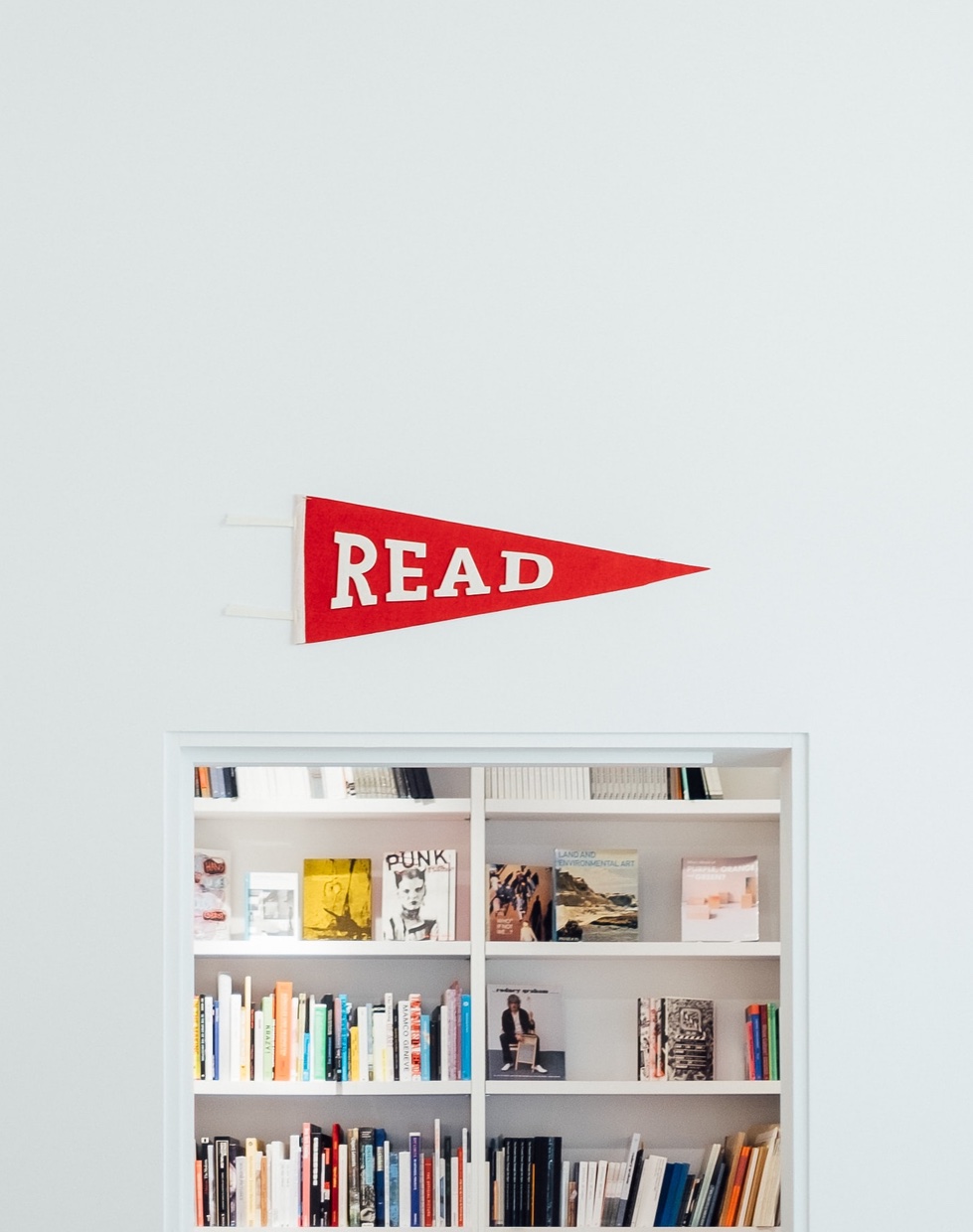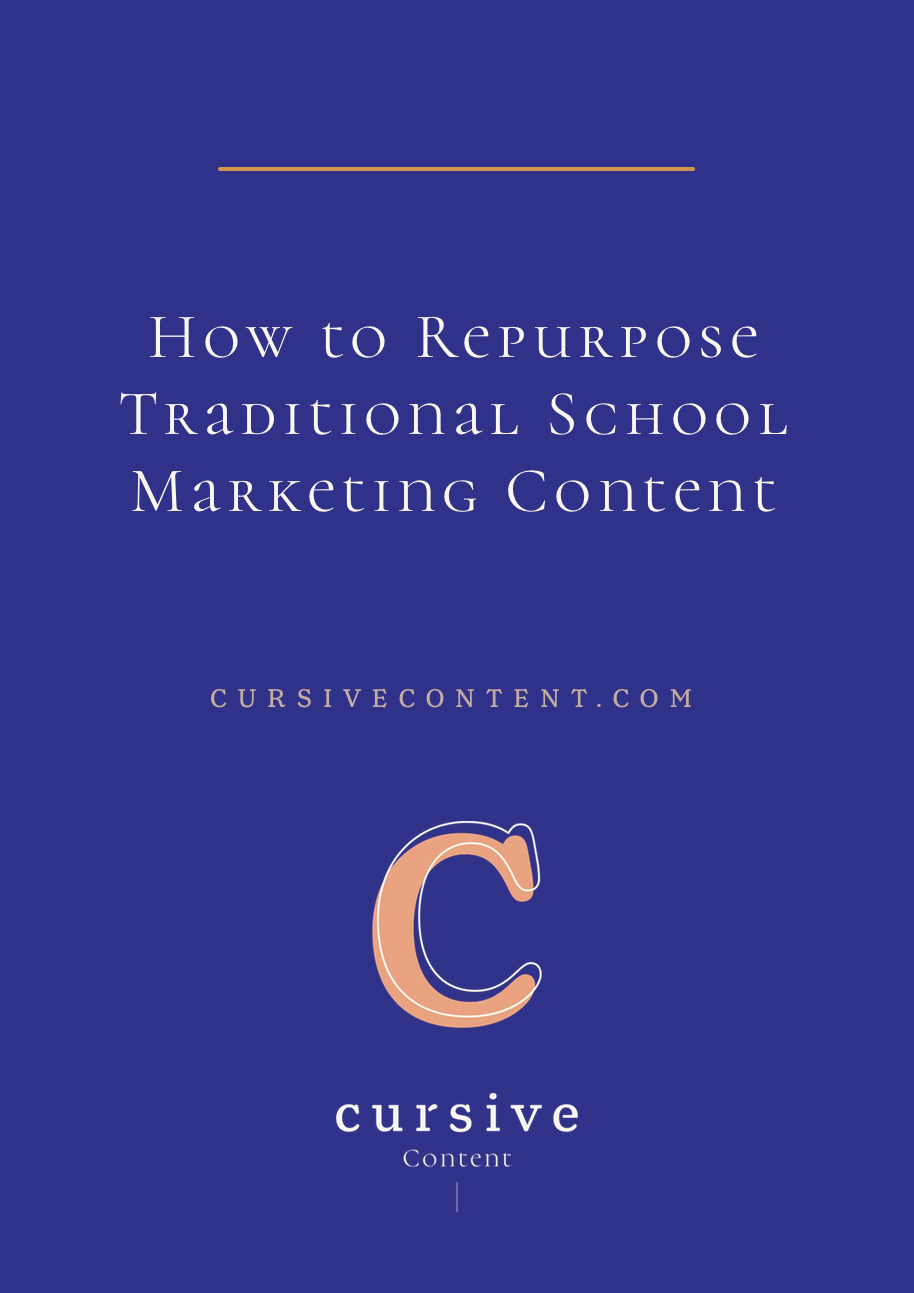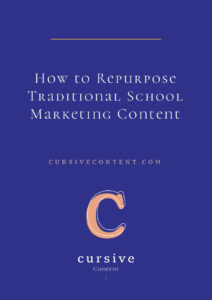How to Repurpose Traditional School Marketing Content

One of the biggest obstacles school marketers face sounds something like this: “We just don’t have time to constantly create new content!”
And you know what? We get it. Some days are so busy that you eat lunch at 3pm (at your desk) and don’t even realize it’s time to head home until you look up for the first time in hours and notice that the office is empty.
Such is the life of a school marketer.
Thankfully, content marketing comes with a built-in solution for schools that are overwhelmed by creating new content. It’s called content repurposing, and it’s not just okay, it’s encouraged.
Let’s look at two of school marketing’s more traditional tools—brochures and magazines—and see how we can give them new life.
Get creative with traditional school marketing collateral
What you have: A brochure that, while still relevant, is boring
What you can do with it:
- Create an ebook by freshening up the copy and having a graphic designer add some intriguing visuals.
- Develop a video series by pulling topics from the brochure and expanding on them. Keep the videos short—this will help hold viewer interest and make it quicker, easier and less expensive for you to complete them.
- Create graphics using the topics, stats and other information highlighted in the brochure, then share them on social media
What you have: Old magazines that are a mix of outdated articles, past news, and snippets of old stories
What you can do with it:
- Pull facts from the magazines and repurpose them for use in your enewsletter or on social media.
- Browse the old magazines for significant or interesting events, and develop an infographic that calls out these important events in your school’s history
- Brainstorm how you can use the content on your blog. You can create a “Where Are They Now?” series about alumni who were featured in the magazine when they were students, or an “On This Date” column that tracks important events that happened throughout your school’s history. You can provide updates to old stories or even directly repurpose any articles that are still relevant. Get creative!
Be strategic with your approach
Since the point isn’t just to create new content—it’s to engage your audience and guide them to take action to get involved with your school in some way—you need to do more than just be creative, you need to be strategic. As you sit down to repurpose, ask yourself these five questions:
- Who is my audience?
Before you begin writing, be clear about who the content is for. Audience personas help you picture that exact person in your head, so that you feel as if you are telling him or her a story, rather than writing an open letter to the world. - Why should my audience care about this story?
Forget your agenda and think about the topic strictly from your audience’s perspective. How does the topic affect their lives? What challenges do they have that you can address? How can you ease their minds, make their situation more clear, or help them feel understood? - What do I want my audience to do after reading?
Now here is where your content really separates from your content marketing. When you are practicing content marketing (as opposed to just creating content) you influence audience behavior. So what action do you want your audience to take after reading? Make sure you have a clear call-to-action in mind, so that your audience doesn’t have to think about what to do next. Make it easy. - What is the unique perspective this school can offer?
Once you figure out what’s in it for your audience, try to approach the topic from a unique angle. Perhaps most content written about this topic is delivered in an FAQ or essay-like format. Can you turn it into something helpful or actionable, like a how-to guide? Perhaps your unique expertise means you can write on the topic in more depth, showcasing your school’s collective knowledge. Maybe you have real-life examples that prove what you want to explain. There are ways to explore a topic that go beyond a simple explanation. - What extra oomph can I bring to this story to connect with my audience?
Oomph is unexpected. It’s power, creativity, spice. When you tell a story, you don’t just jump in at the climax; you lead into it to enthrall your audience. Start with a story or example. Let your school’s personality shine through.
- Who is my audience?
Once you’re ready to start editing, here are some guidelines to follow that will help you get the most out of your efforts:
- Whenever possible, add visual interest with photos, illustrations and graphics
- Use headlines, callouts and bullet points to break up the copy
- Re-read the content and double check stats to make sure they’re still accurate
- Turn to a graphic designer to work their magic on your most high profile pieces of content as well as content that’s visually driven, such as an infographic
- Share the new content with relevant faculty and staff so they can share it with their students or on their social networks
Don’t write off the pieces you’ve already written. That article you wrote two years ago and those old magazines that were just gathering dust in the corner of your office still have stories to tell.
Ready to use content to tell a stronger school story? We can help.
MORE ARTICLES
-
 Clarity in 50 Words or Less: How to Write Your School’s One-Sentence Story
Clarity in 50 Words or Less: How to Write Your School’s One-Sentence Story -
 What Should Your School Do with Its Blog Now That AI Is Changing Search?
What Should Your School Do with Its Blog Now That AI Is Changing Search? -
 What Is Your Private School’s Bold & Unifying Big Promise?
What Is Your Private School’s Bold & Unifying Big Promise? -
 AI Writing Prompts to Power Private School Storytelling
AI Writing Prompts to Power Private School Storytelling -
 When to Outsource Your Private School Content Marketing to an Expert
When to Outsource Your Private School Content Marketing to an Expert -
 3 Unique Ways to Attract Dream Families with Content
3 Unique Ways to Attract Dream Families with Content -
 4 Quick & Easy Ways to Improve Your School’s Emails
4 Quick & Easy Ways to Improve Your School’s Emails -
 The Best Content Marketing Resources for Independent Schools
The Best Content Marketing Resources for Independent Schools

